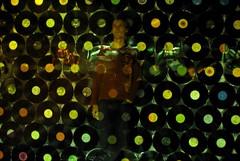There’s one loong loong project ahead. Taking each of my vinyls on the turntable set next to my laptop, playing and recording them, normalizing the recording and tagging and archiving the mp3-files. Even if I would just record the most important records, this would take months. I was thinking to make the process a bit shorter, but I ended up having a software question in front of me.
I took the first step today and bought the cartridge which has been told to be the best one available for DJing purposes. No matter to which DJ-needle you compare Grado DJ200, the difference is huge. Check it yourself:
DJ Caro2 tested seven different DJ cartridges and recorded the test. Take a moment and listen the test. The last two loops are recorded with Grado DJ200 – the quality difference is mad. Here are the cartridges used in the test – you can hear each for about 10 sec.
Stanton 500al 1.8g (low weight)
Stanton 500al 3g
Stanton 680Hp 3g
Shure M35X 2g
Shure M44G 1.5g
Ortofon DJ E 3g
Ortofon Elektro 3g
Grado Dj200 3.4g (Technics SL-1200Mk5)
Grado Dj200 3.4g (Stanton STR8-80)
Now as I have the best possible cartridge, I would still need some good software to do as much work for me as possible. Basically the easiest and fastest way to digitalize the vinyls would be to record them to one file without breaks.
So – I need a program which will split this long audio file into separate tracks. Then I need a program which would normalize all these files as a batch.
After this is done, iTunes will take care of the wav-to-mp3 conversion and tagging.
I know there are several DJs and music lovers out there having the same project in their hands. Any software tips, hifi knowledge, experiences or opinions would be very welcome.
edit: Read further notes about the project.

I would recommend not to bother with compressing them, especially not into a lossy format.
HD-space is cheap, dirt cheap these days.
You don’t want to end up with mp3’s done with today’s standards and think about re-recording and storing uncompressed files again in a few years. Just do it now, for once and for all.
I don’t even know which encoder & settings iTunes uses when making mp3’s, so it could be.. anything, quality-wise.
So, if I were you, I would store wavs just as they are – or if discspace is an issue, make flac files from them.
http://flac.sourceforge.net/
Then you can make mp3/aac/ogg/whatever easily from lossless source without the need to touch turntables again.
Very good notes. I digitalized the 10 first tracks today and realized I want to save two copies – one lossless copy from archiving and playing purposes and one compressed copy for listening and portable music players.
One thing you should remember if burning those on CD for latter use. Vinyls tend to have a little movement in them. Compared to track completely digital, the digital one is “straight forward”, while recorded one can have some unstability.
It’s nothing you can’t fix on the fly while making a transition on CDJ’s though.
(and you already knew this, but just as a reminder)
Audacity for editing, portable MP3-player with good quality line-in for recording, Audiograbber for normalizing (drag & drop just works) and flac / lame for encoding. I personally make Flac-files with full compression (no loss in quality) and a 128kbit mp3-file for portable player and listening at home, work etc. Winamp is good enough for tagging, although there could be better programs for this. Don’t forget to tag files, put there as much information as you see you COULD need in the future when you have huge collection digitalized.
And don’t forget your backups ;)
Why MP3? Why not AAC, which gives you better sound quality and smaller file size with the same bitrate?
We’ll my excuse for MP3 is simply the fact that my portable player does not support AAC. And also I don’t really think it makes that big difference on such low bitrates. The strong point in MP3 is still that it simply works with every player.
Here is a very nice tutorial with loads of links to vinyl ripping programs (mainly Windows, though)
http://www.delback.co.uk/lp-cdr.htm
As gateway said tagging is vital with large collections. But I have to disagree that tagging with Winamp is good enough, cause is so damn slow! For tagging large collections I recommend a program called Tag & Rename (http://www.softpointer.com/tr.htm). You can get the tags from the file names with mask editor and/or edit multiple files at the same time and then just made the final tagging file by file. The final touch is to tagg the album art (which can often be found easily via http://www.discogs.com)
With large collections it’s also important to have some easy to handle file structure like music/artist/album/01 – whatever.mp3.
jjkobsson wrote:
“With large collections it’s also important to have some easy to handle file structure like music/artist/album/01 – whatever.mp3.”
That is exactly why I’m preferring iTunes these days. No need to do such folder structures by yourself, iTunes takes care of this for you. Renaming and tagging files is easy, and different playlists can be found easily.
There’s no way I could be separated from my iTunes and my personal playlist structure.
Check this entry in my blog:
http://www.djloopy.info/?p=209